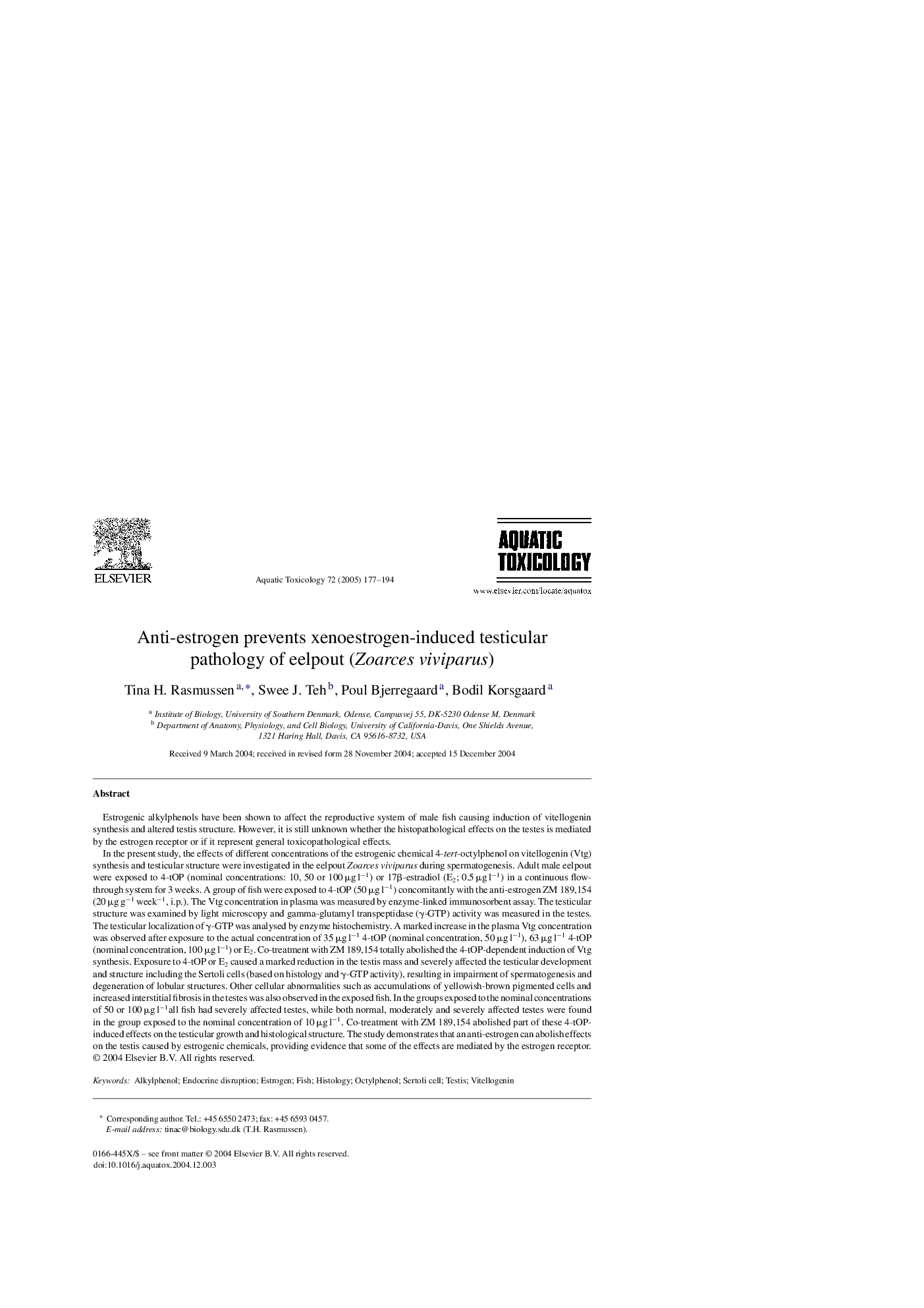| Article ID | Journal | Published Year | Pages | File Type |
|---|---|---|---|---|
| 9478266 | Aquatic Toxicology | 2005 | 18 Pages |
Abstract
In the present study, the effects of different concentrations of the estrogenic chemical 4-tert-octylphenol on vitellogenin (Vtg) synthesis and testicular structure were investigated in the eelpout Zoarces viviparus during spermatogenesis. Adult male eelpout were exposed to 4-tOP (nominal concentrations: 10, 50 or 100 μg lâ1) or 17β-estradiol (E2; 0.5 μg lâ1) in a continuous flow-through system for 3 weeks. A group of fish were exposed to 4-tOP (50 μg lâ1) concomitantly with the anti-estrogen ZM 189,154 (20 μg gâ1 weekâ1, i.p.). The Vtg concentration in plasma was measured by enzyme-linked immunosorbent assay. The testicular structure was examined by light microscopy and gamma-glutamyl transpeptidase (γ-GTP) activity was measured in the testes. The testicular localization of γ-GTP was analysed by enzyme histochemistry. A marked increase in the plasma Vtg concentration was observed after exposure to the actual concentration of 35 μg lâ1 4-tOP (nominal concentration, 50 μg lâ1), 63 μg lâ1 4-tOP (nominal concentration, 100 μg lâ1) or E2. Co-treatment with ZM 189,154 totally abolished the 4-tOP-dependent induction of Vtg synthesis. Exposure to 4-tOP or E2 caused a marked reduction in the testis mass and severely affected the testicular development and structure including the Sertoli cells (based on histology and γ-GTP activity), resulting in impairment of spermatogenesis and degeneration of lobular structures. Other cellular abnormalities such as accumulations of yellowish-brown pigmented cells and increased interstitial fibrosis in the testes was also observed in the exposed fish. In the groups exposed to the nominal concentrations of 50 or 100 μg lâ1all fish had severely affected testes, while both normal, moderately and severely affected testes were found in the group exposed to the nominal concentration of 10 μg lâ1. Co-treatment with ZM 189,154 abolished part of these 4-tOP-induced effects on the testicular growth and histological structure. The study demonstrates that an anti-estrogen can abolish effects on the testis caused by estrogenic chemicals, providing evidence that some of the effects are mediated by the estrogen receptor.
Keywords
Related Topics
Life Sciences
Agricultural and Biological Sciences
Aquatic Science
Authors
Tina H. Rasmussen, Swee J. Teh, Poul Bjerregaard, Bodil Korsgaard,
